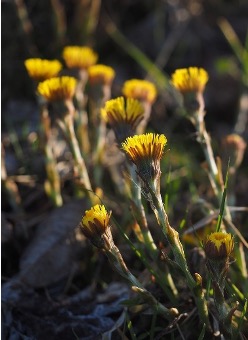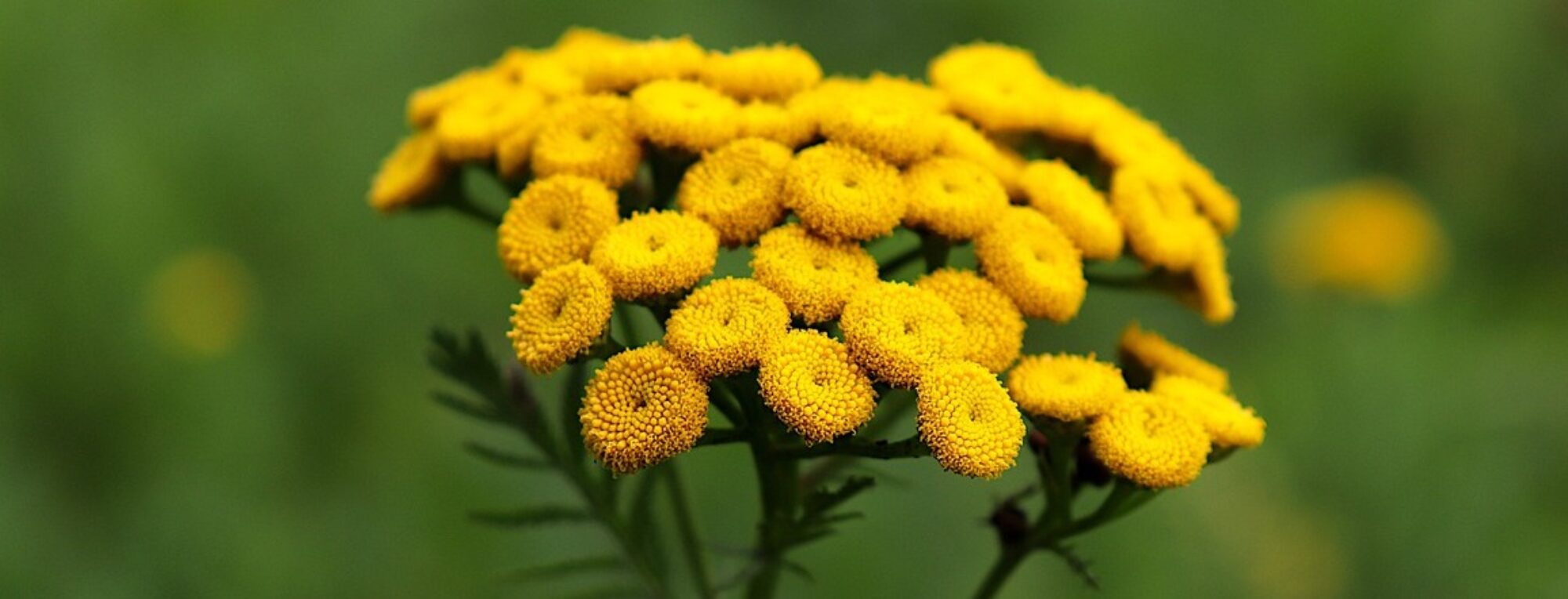
English name: Coltsfoot, Coughwort
Family: Asteraceae
Botanical characteristic: A perennial plant that grows to a height of 30 cm. It forms a long creeping rhizome, from which spring leafless stems covered with ovate-lanceolate scales, ending in a sheath, grow. The flowers in the umbels are yellow-colored, tongue-shaped at the edges. After flowering, large, round-heart-shaped, gray-felt leaves begin to develop. The fruit is achenes with a white plume. It blooms from March to May.
Microscopic drawing:

Distribution: It grows throughout Europe, on moist clay soil, in fields, meadows, pastures.
Drug: Farfarae flos, Farfarae folium
Harvesting method: The flower heads are harvested from March to April. Entire unopened flower heads are collected using gardening shears, along with a 1 cm long stem. The light green leathery leaves are collected during the months of May to August. The plant blooms from March to May. This species can be confused with butterbur.
Drying: Flowers and leaves are dried naturally in one layer, in the shade, in a ventilated room. Artificially up to 40 °C.
Active substances: The whole plant is characterized by a high amount of mucilage. It also contains tannins, bitters, inulin and a small amount of alkaloids (senkirkin, tusilagin). The flowers also contain essential oils and yellow dyes (xanthophylls).
Uses: Coltsfoot is indicated for dry and irritating coughs, but it is also attributed anti-inflammatory properties. However, caution is advised regarding the long-term use of the herb from this plant to prevent the manifestation of the hepatotoxic effects of alkaloids.
Traditional method of use in indications determined solely on the basis of long-term use:
- supportive treatment of respiratory diseases.
Selected herbal preparations: JUVAMED COLTSFOOT – LEAF herbal loose tea 1×30 g, Natural Pharmacy RESPIRATORY HERBAL tea 1×60 g, Natural Pharmacy Herbal Blend FOR FLU 40 g.
